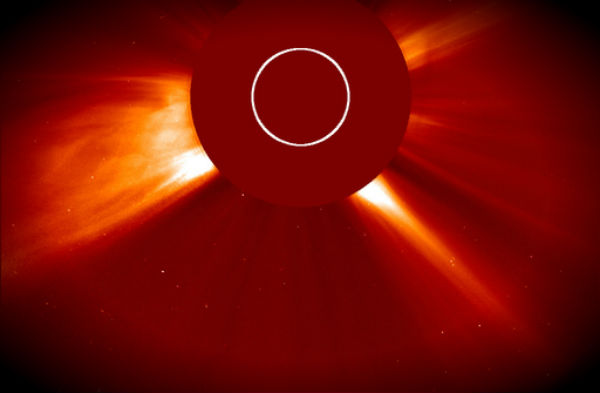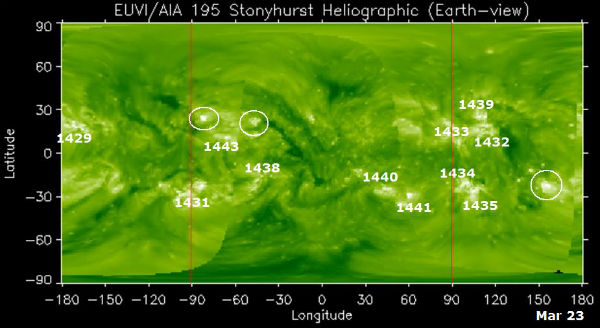Returning Sunspot 1431 produced moderate M1 solar flare

Old Sunspot 1431 is now rotating back into view off the southeast limb and is also producing solar flares. So far this afternoon it produced a minor C6.5 flare, followed by a moderate M1.0 event at 19:40 UTC. Various small sunspots did form including regions 1441, 1442 and 1443, but each are magnetically simple and stable. There is now a chance for further M-Class flares around returning sunspot 1431. Stay Tuned as solar activity looks to be increasing. (SolarHam)

Joint USAF/NOAA Report of Solar and Geophysical Activity (22 Mar 2012)
Solar activity was low. Region 1440 (S25W38) produced todays only C-class flare at 22/1750Z. This region appears to be decaying and currently shows a beta-gamma configuration. Three new sunspot groups were numbered today: Region 1441 (S27W56), Region 1442 (N13E49) and Region 1443 (N16E62). All of these regions were small, quiet, and stable. Solar activity is expected to be very low with a chance for an isolated C-flare from Region 1440.
The geomagnetic field was quiet with an isolated unsettled period from 22/1800Z to 22/2100Z. Solar wind data appeared to indicate a solar sector boundary crossing at about 22/1930Z. The greater than 2 MeV electron flux at geosynchronous orbit was at high levels throughout the period. The geomagnetic field is expected to be quiet for the next three days (23-25 March).
Auroras continue to flicker around the Arctic Circle despite waning solar wind speeds. For reasons that are still not fully understood, equinoxes favor auroras.






Commenting rules and guidelines
We value the thoughts and opinions of our readers and welcome healthy discussions on our website. In order to maintain a respectful and positive community, we ask that all commenters follow these rules.